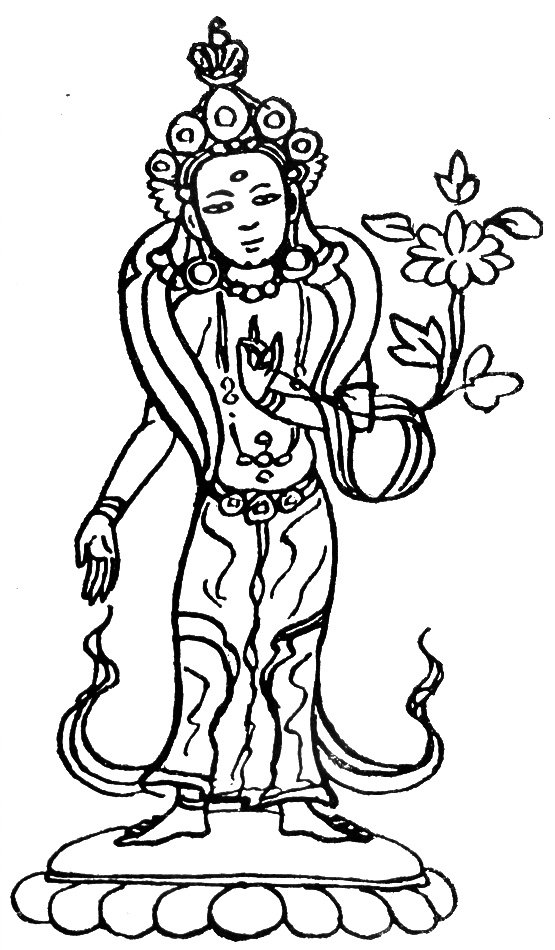The Indian Buddhist Iconography
by Benoytosh Bhattachacharyya | 1958 | 51,392 words | ISBN-10: 8173053138 | ISBN-13: 9788173053139
This page contains an iconography image of Hindu Gods: Mahasarasvati and represents figure 230 of the book Indian Buddhist Iconography, based on extracts of the Sadhanamala English translation. These plates and illustrations represent either photographs of sculptures or line-drawing reproductions of paintings or other representations of Buddhist artwork.
Figure 230 - Hindu Gods: Mahāsarasvatī

Fig. 230: Mahāsarasvatī
It is not a fact that Hindu gods [viz., Mahāsarasvatī] were unknown in the Buddhist pantheon or that the Buddhist pantheon wholly consisted of Buddhist gods. [...] A perusal of the Niṣpannayogāvalī and especially the Dharmadhātuvāgīśvara-maṇḍala will show what a large number of Hindu deities was incorporated in the Mandala, and how this large number was tackled intelligently and fitted into the scheme of the Buddhist Maṇḍalas. [...] Amongst the Hindu deities incorporated into the Buddhist pantheon, three deities appear to be of great importance. These are Mahākāla the prototype of Śiva Mahādeva with the Triśūla as the recognition symbol, Gaṇapati the elephant-faced god, and Sarasvatī the Goddess of Learning with her characteristic Vīṇā. Separate Sādhanas are assigned to all of them, and even independent shrines for them are not wanting in the Buddhist countries of the North.
Sarasvatī is the name of an ancient river now filled up by the sands of Rajputana on the banks of which the Vedic Aryans originally settled after their migration to India. As the banks of the river were occupied by the Vedic Aryans who composed many hymns, and were the scene of many sacrifices, the river was, later on, in the Pauranic age deified as the the Goddess of Learning. The Buddhists borrowed this Hindu goddess, incorporated her bodily into their pantheon in the Tantric age when she was equally popular with the Hindus and the Buddhists, and modified her form in various ways. The Buddhist Sarasvatī may have one face with two arms, or three faces and six arms. When two-armed, she has four different variations. As her worship is widely prevalent among the Buddhists owing to the belief that like Mañjusrī and Prajñāpāramitā, she confers wisdom, learning, intelligence, memory, etc. a comparatively large number of Sādhanas is assigned to her in the Sādhanamālā.
Mahāsarasvatī:
Symbols: right varada-mudrā; left: lotus
Colour: white.
Mahāsarasvatī has white complexion, shows the Varada pose in the right hand and carries the white lotus in the left.
This is the general appearance of Sarasvatī, and all the other varieties, unless otherwise stated, are identical in appearance with the one just described. The distinctive feature of this goddess Mahāsarasvatī is that she shows like the ordinary Tārās the Varada-mudrā in the right hand and carries the lotus in the left (Fig. 230), and is surrounded by four deities identical in form with herself Prajñā is in front of her, Medhā to her right, Smṛti to her left, and Mati in the west. These four divinities may also accompany other varieties of Sarasvatī. As the Sādhana is silent about the particular Āsana, she may be represented in any attitude, sitting or standing.
Sarasvatī is a popular goddess both in Tibet and China where she is widely represented.
